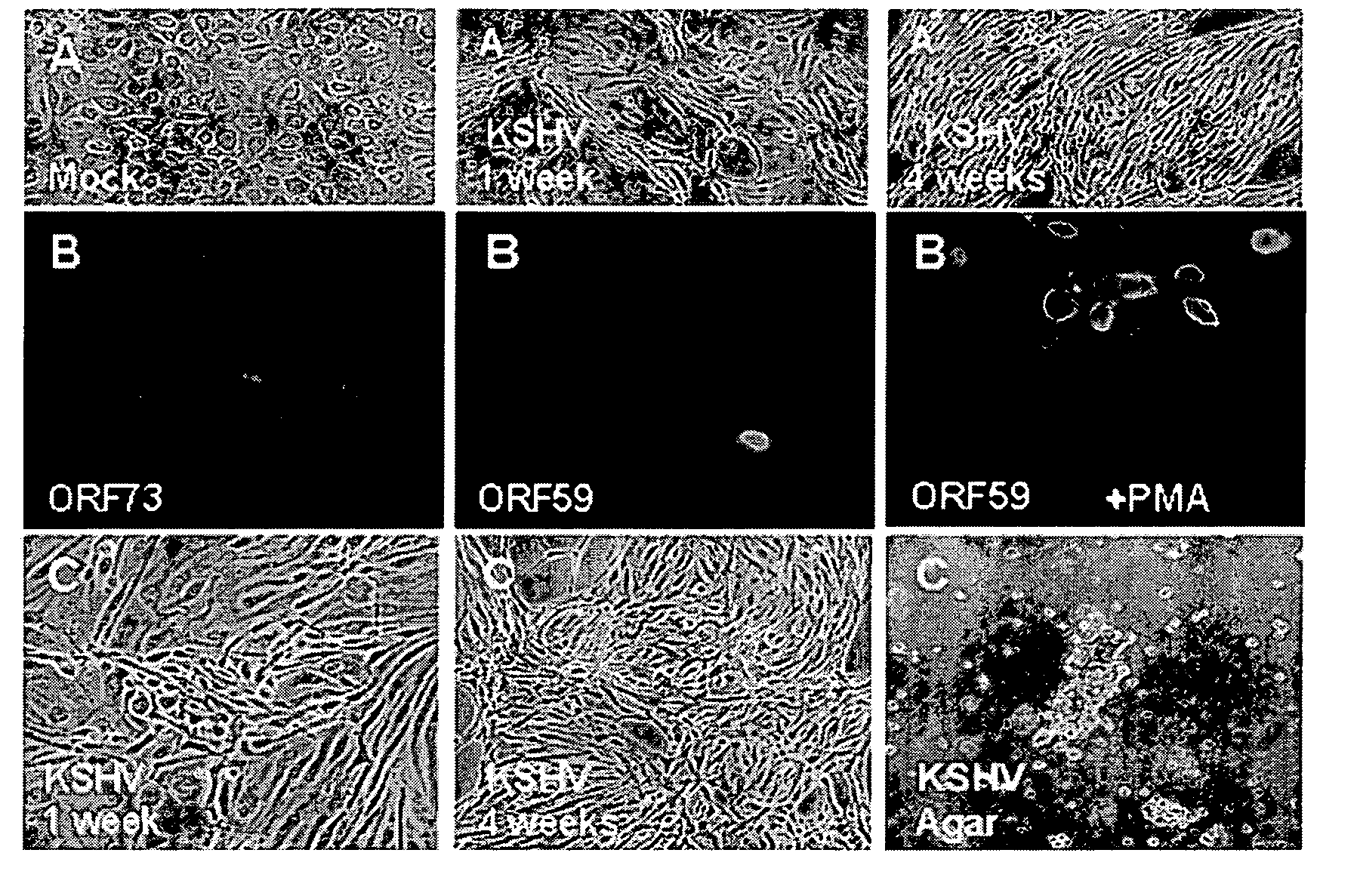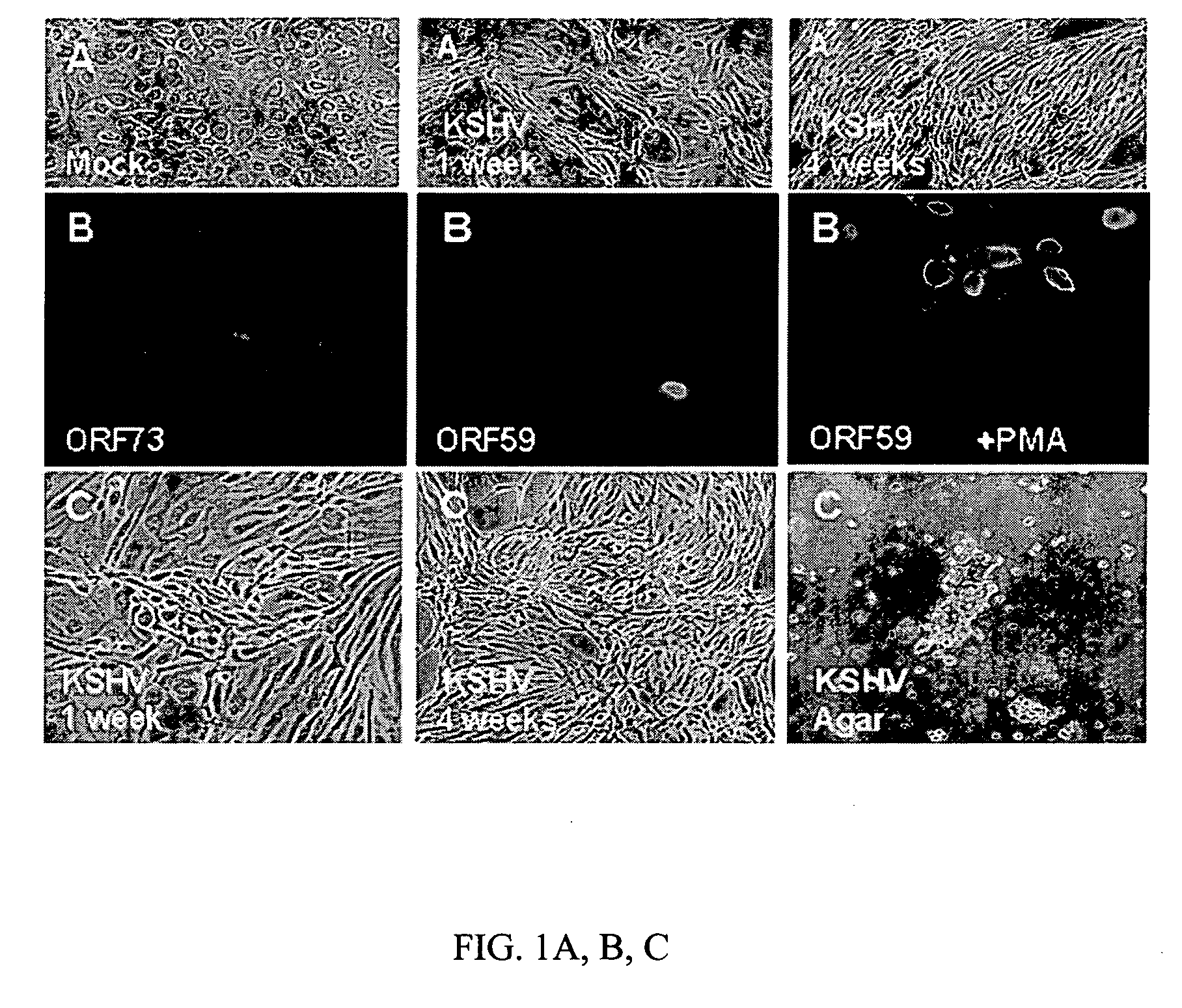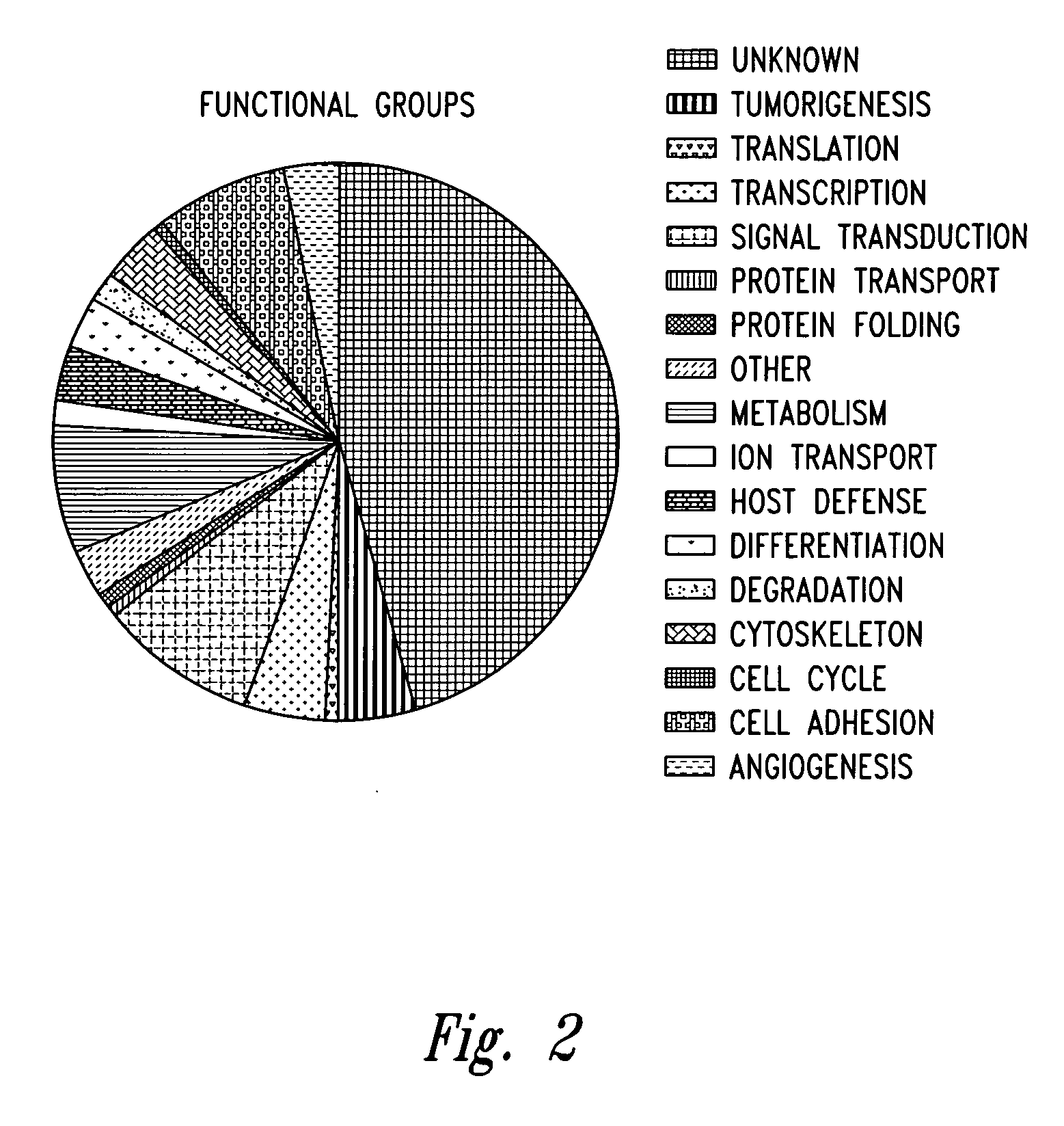Methods of treatment and diagnosis of Kaposi's sarcoma (KS) and KS related diseases
a kaposis sarcoma and kaposis sarcoma technology, applied in the field of kaposis sarcoma and kaposis related diseases, can solve the problem that relative little is known about the influence of viral gene expression on specific cellular gene profiles
- Summary
- Abstract
- Description
- Claims
- Application Information
AI Technical Summary
Problems solved by technology
Method used
Image
Examples
example 1
(KSHV-Infected DMVECs are a Valid Model System for in vivo Tumorogenesis)
[0212] Soft Agar Cell Growth Systems. The soft agar assay system is an art-recognized in vitro cell growth / differentiation system to model in vivo cancer. Particularly, out of a host of exemplary references, see: Tomkowicz, K et al., DNA Cell Biol. 21:151, 2002 (use of soft agar assays system to demonstrate transformation with KSHV kaposin protein); Saucier et al., Oncogene 21:1800, 2002 (use of soft agar assays system to demonstrate transformation with Met RTK protein); and see also Chernicky, C L, Mol. Pathol. 55:102, 2002 (use of inhibition of colony formation in soft agar as validation for siRNS inhibition of a tumor growth factor).
[0213] KSHV-infected DMVEC. DMVECs were used as an in vitro model for examining cancerous transformation and viral replication, based, inter alia, on that fact that neoplastic cells in KS tumors are predominantly of vascular origin, whereas KSHV is primarily found in cells of e...
example 2
Nucleic Acid Microarray Technology was used for Gene Expression Profiling of KSHV-Infected Dermal Microvascular Endothelial Cells (DMVEC) to Identify Cellular Genes whose Expression is Regulated by KSHV
[0219] Nucleic Acid Microarray Data Analysis. Altered expression of cellular genes frequently represents the ultimate cause of tumor formation. In the case of virally-induced tumors, viral genes modulate the host cell gene expression program that is in turn responsible for the transformed phenotype. Cellular genes involved in the transformed phenotype caused by latent infection with KSHV were identified by using DNA microarrays to examine the differential gene expression profiles of dermal microvascular endothelial cells (DMVEC) before and after KSHV-infection.
[0220] For RNA isolation and fluorescent labeling, two RNA probe samples from DMVEC cells, independently infected with KSHV, and two RNA probe samples were prepared from independent cultures of age- and passage-matched uninfec...
example 3
Target Validation; Genes Necessary for Virally-Induced Morphological Changes in KSHV-Infected DMVEC were Identified using Antisense PMOs
[0227] Antisense Phosphorodiamidate Morpholino Oligomers (PMOs). PMOs (see, e.g., Summerton, et al., Antisense Nucleic Acid Drug Dev. 7:63-70, 1997; and Summerton & Weller, Antisense Nucleic Acid Drug Dev. 7:187-95, 1997) are a class of antisense drugs developed for treating various diseases, including cancer. For example, Arora et al. (J. Pharmaceutical Sciences 91:1009-1018, 2002) demonstrated that oral administration of c-myc-specific and CYP3A2-specific PMOs inhibited c-myc and CYP3A2 gene expression, respectively, in rat liver by an antisense mechanism of action. Likewise, Devi G. R. (Current Opinion in Molecular Therapeutics 4:138-148, 2002) discusses treatment of prostate cancer with various PMO therapeutic agents.
[0228] PMOs were designed and used, according to the present invention to silence genes identified as being consistently up-regu...
PUM
| Property | Measurement | Unit |
|---|---|---|
| temperature | aaaaa | aaaaa |
| Tm | aaaaa | aaaaa |
| temperature | aaaaa | aaaaa |
Abstract
Description
Claims
Application Information
 Login to View More
Login to View More - R&D
- Intellectual Property
- Life Sciences
- Materials
- Tech Scout
- Unparalleled Data Quality
- Higher Quality Content
- 60% Fewer Hallucinations
Browse by: Latest US Patents, China's latest patents, Technical Efficacy Thesaurus, Application Domain, Technology Topic, Popular Technical Reports.
© 2025 PatSnap. All rights reserved.Legal|Privacy policy|Modern Slavery Act Transparency Statement|Sitemap|About US| Contact US: help@patsnap.com



